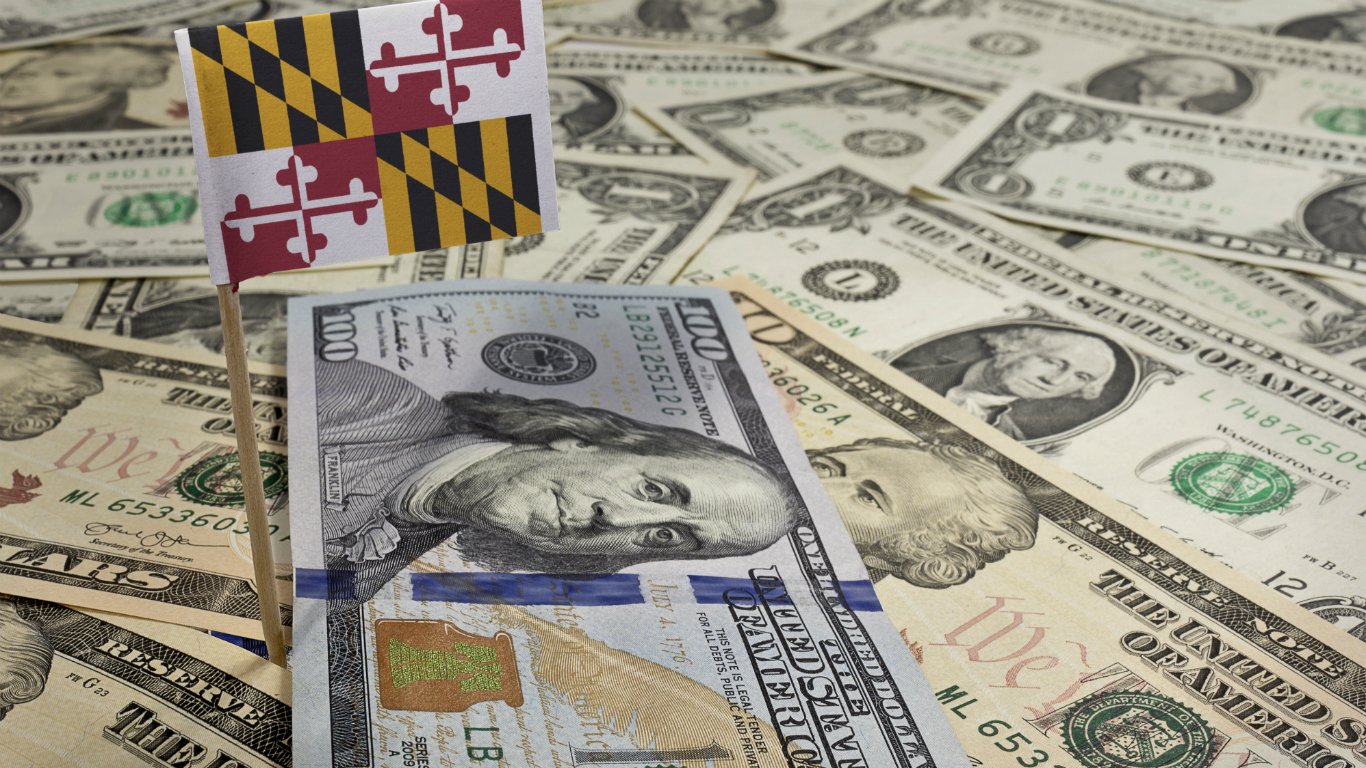

The United States is home to just 4% of the world’s population, yet it generates 24% of global economic output. Family businesses in small towns across the country and farms that cover millions of acres of rural America alike contribute to the country’s $19.5 trillion economy. But the country’s biggest economic drivers are just a handful of cities.
The New York City metropolitan area alone has a GDP of $1.7 trillion — nearly equal to the total economic output of all non-metro areas in the country. New York is one of fewer than two dozen metro areas nationwide that together make up more than half of the U.S. economy.
To identify these 23 cities that account for over half of U.S. GDP, 24/7 Wall St. reviewed 2017 GDP for all U.S. metropolitan areas using data from the Bureau of Economic Analysis. The economic might of the cities on this list is partially a product of their size — all but one of these cities rank among the 30 most populous in the country.
Another important factor is the presence of major companies. Many of the largest Fortune 500 businesses are headquartered in these metro areas and are leading regional employers. They include companies like Exxon Mobil, Apple, and Amazon.com, which are also the largest in their respective state by revenue. Here is a full list of the largest company in each state.
Another common trait many of these cities share is a well-educated population. Major employers are more likely to operate in areas with a skilled workforce. Nationwide, 32.0% of adults have at least a four-year college degree, but in 20 of the 23 cities on this list, the share of adults with a bachelor’s degree is higher than the national average. Many of the cities on this list rank among the best-educated in the country.
| Rank: | Metro area: | 2017 GDP: | Pct. of U.S. GDP: | Adults w/ a 4 yr. degree: |
|---|---|---|---|---|
| 1 | New York, NY | $1.7 trillion | 8.8% | 39.6% |
| 2 | Los Angeles, CA | $1.0 trillion | 5.4% | 34.2% |
| 3 | Chicago, IL | $679.7 billion | 3.5% | 37.7% |
| 4 | Dallas, TX | $535.5 billion | 2.7% | 34.6% |
| 5 | Washington, D.C. | $530.0 billion | 2.7% | 50.8% |
| 6 | San Francisco, CA | $500.7 billion | 2.6% | 49.3% |
| 7 | Houston, TX | $490.1 billion | 2.5% | 32.4% |
| 8 | Philadelphia, PA | $445.0 billion | 2.3% | 37.7% |
| 9 | Boston, MA | $438.7 billion | 2.3% | 47.6% |
| 10 | Atlanta, GA | $385.5 billion | 2.0% | 37.9% |
| 11 | Seattle, WA | $356.6 billion | 1.8% | 41.9% |
| 12 | Miami, FL | $344.9 billion | 1.8% | 32.1% |
| 13 | San Jose, CA | $275.3 billion | 1.4% | 50.8% |
| 14 | Detroit, MI | $260.6 billion | 1.3% | 31.1% |
| 15 | Minneapolis, MN | $260.1 billion | 1.3% | 41.7% |
| 16 | Phoenix, AZ | $243.0 billion | 1.2% | 31.1% |
| 17 | San Diego, CA | $231.8 billion | 1.2% | 38.8% |
| 18 | Denver, CO | $208.9 billion | 1.1% | 43.9% |
| 19 | Baltimore, MD | $192.2 billion | 1.0% | 39.5% |
| 20 | Charlotte, NC | $174.0 billion | 0.9% | 35.5% |
| 21 | Portland, OR | $171.8 billion | 0.9% | 40.3% |
| 22 | St. Louis, MO | $161.3 billion | 0.8% | 34.6% |
| 23 | Riverside, CA | $157.9 billion | 0.8% | 21.4% |
Methodology
To identify the 23 metro areas that account for more than half of the United States’ GDP, 24/7 Wall St. reviewed 2017 GDP in current dollars for 383 U.S. metro areas. Total population and the share of adults with at least a bachelor’s degree are one year estimates from the U.S. Census Bureau’s 2017 American Community Survey.
Sponsored: Attention Savvy Investors: Speak to 3 Financial Experts – FREE
Ever wanted an extra set of eyes on an investment you’re considering? Now you can speak with up to 3 financial experts in your area for FREE. By simply
clicking here you can begin to match with financial professionals who can help guide you through the financial decisions you’re making. And the best part? The first conversation with them is free.
Click here to match with up to 3 financial pros who would be excited to help you make financial decisions.
Thank you for reading! Have some feedback for us?
Contact the 24/7 Wall St. editorial team.
 24/7 Wall St.
24/7 Wall St.
